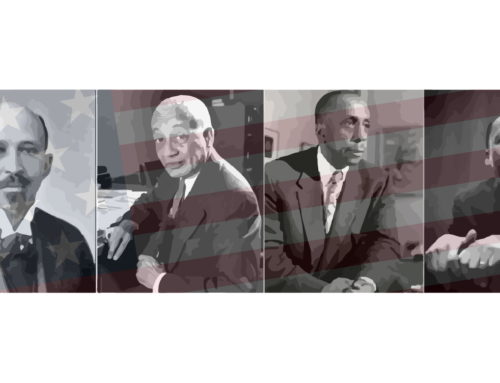By Glen Paul Hammond
It is true, we shall be monsters, cut off from all the world; but on that account we shall be more attached to one another.” ̶ Mary Shelley, Frankenstein.
As Marshall McLuhan pointed out in his book, Understanding Media, over a half-century ago, a characteristic of new and pervasive technologies is the numbness that accompanies them, a numbness that does not allow the society effected by it to objectively analyze its influence. In being overawed by the creation, McLuhan argued, man becomes mesmerized by what he called a technological extension of the self, falling into its trance, conforming to it rather than the other way around and, through our continuous embrace of it in daily use, allowing ourselves to become its servomechanisms (McLuhan, Understanding, 50-51). Technology, in this context, becomes a religion that demands sacrifice. Yet, through the lens of such unquestioning devotion, society exposes itself to the dangers of losing much more than it gains in the environments that these extensions create. In the case of the internet and its social media platforms, it is necessary then to acquire a greater understanding of the technology’s potential influences in order to, as McLuhan advised, mitigate its negative effects and bring it into orderly service (McLuhan, Understanding, 6)
In a warning about the social consequences of powerful mediums, the writer of Brave New World, Aldous Huxley, remarked that one of the greatest future threats to liberal democracy was society being caught unprepared by an advancing technology that changes social conditions, so that people find themselves “in a situation which they didn’t foresee and doing all sorts of things they didn’t want to do.” What Huxley articulated was the very essence of McLuhan’s exhortation on the power of media, except that McLuhan suggested that it was made all the more dangerous by an unawareness of the true message of any given medium. The University of Toronto professor explained that while the user of media is distracted by its content, he is more susceptible to the actual agent of its influence— the medium itself. Hence, McLuhan’s most famous aphorism, “The medium is the message.”
The ability to distinguish between the influence of the content of a media and the environment that the media creates is essential in bringing the technology out of the subliminal and into a conscious level of understanding. The electric light is one of McLuhan’s prime examples since, unlike other forms of media, it does not come in pairs, “with one acting as the ‘content’ of the other, obscuring the operation of both” (McLuhan, Understanding 57). The electric lightbulb is pure information; consequently, distinguishing between the content of the lightbulb, or what one does due to its presence, exposes its true power by making one immediately conscious of the fact that the lightbulb created an environment that changed human behavior in allowing humans to do things at night and to perceive nighttime differently (McLuhan, Understanding 8-9). Nightlife, night owl, nightclubs, the all-nighter are all examples of social patterns that came about due to a technology that extended the day far beyond the circadian rhythms of our ancestors. The activity that the lightbulb produces is of no importance when compared to the influence of the medium itself. For McLuhan, it is not what is said on the telephone that demands society’s attention but the fact that the telephone as a service creates a huge environment that monumentally changes human function and behavior (McLuhan, ABC).
Viewing social media through this lens, it seems obvious that it is not the content, or what is said on these very popular platforms where the true power to influence lies, rather it is in the medium itself. Yet, what is the source of its fascination and how might discovering this help break the Narcissistic spell that McLuhan says keeps us blind to its potentially negative influence?
Electronic or digital technology occurs at such a velocity that the instantaneous interplay that it creates essentially eliminates time and space to produce the experience of a total field (McLuhan, Understanding 150). In an interview with Norman Mailer, McLuhan and the famous writer noted that up until the mid-twentieth century man had a sequential understanding of time and space rooted in literate western society’s fragmented perception of the world. The interplay of the technological development of, for example, alphabetic cultures and its influence on connected lineal sequencing in the psychic and social organization of the culture, led to the “breaking up of every kind of experience into uniform units” (McLuhan, Understanding 93). McLuhan notes that the “Western feeling for time as duration” with its subsequent feeling of impatience is derived from the “division of time into uniform units” as well as the consequential fixing of time “as something that happens between two points” (McLuhan, Understanding 156). The shaping of man’s perception of the world through the technological development of that world is, in this way, interrelational. The perspective of a journey through such a lens is experienced according to Norman Mailer as a series of small perils or areas of existence that the traveler must pass through, sequentially, learning and being influenced by the journey along the way. In this sense, the traveler (a term rooted in the word travail) must endure the labor of the journey, striving through the duration of time and space it requires. During the trip of 18th century man, by coach or horseback, for example, the traveler would, over a lineally perceived series of points, cross over an actual world in a physically sensuous encounter with nature, villages, and villagers—experiencing long interludes given over to contemplation or self-reflection (Mailer). In bumping up against the other, the sensitive traveler would inevitably have had his own identity revealed and so come to a greater awareness of himself as an individual. In the digital age, however, this experience of time and space is virtually erased.
A useful example of the above is provided by a look into the overawing fascination behind something so mundane as a text message: A Smartphone user in one part of the city receives a text message from another Smartphone user that shows a photo of a Starbucks coffee with the caption, “Drinking this right now.” The receiver of the message leaps into action, strangely excited by an event that normally would be considered of little interest in any other communication between friends. If the same friend were to show the same physical photo of the coffee a week later with the statement, “I had this coffee last week,” it would be greeted with predictable boredom and even disdain. So, why is information like this more interesting simply because of the medium through which it is delivered? The message and the picture have eliminated the time and space that exists between the two friends and made a total field of communication that is instantaneous. Without the technology, such a communication and experience would be supernatural. Through a handheld device, then, average man is propelled into the universe of the Marvel comic—faster than a speeding bullet, he operates as Superman or Flash Gordon. Identifying the irony in being distracted from the mundane with the mundane, however, exposes the source of the fascination: It is not the content of the message; it is the medium.
McLuhan noted that “the message of any medium or technology is the change of scale or pace or pattern that it introduces into human affairs” (Understanding 8). The railway “accelerated and enlarged the scale of previous human functions, creating totally new kinds of cities and new kinds of work and leisure” (McLuhan, Understanding, 8). On the other hand, the acceleration of the airplane, beyond the limits of wheel and road, dissolved “the railway form of city, politics and association” (McLuhan, Understanding 8). The grand cathedral-like railroad stations of the past are testaments to the overawed fascination that man had for a technology that appeared as an explosion to them, enlarging the scope and scale of human function. The airplane, however, produced the opposite perception. By making the world appear smaller, it created a sense of implosion (McLuhan, Understanding 202).
It is through this lens that one can start to piece together how the acceleration of technology into the digital age has influenced the psyche of the modern world. It is, perhaps, not a coincidence that the concept of multiculturalism in the West began coming into vogue at just the same time that McLuhan argued the implosive force of the airplane had made the world seem much smaller to Western man. McLuhan provides a descriptive anecdote of an airline executive who “asked a corresponding executive of each airline in the world to send him a pebble from outside his office” (McLuhan, Understanding 202). The executive’s idea was to construct a little cairn out of these international objects so that, as he described it, due to the medium of aviation, “in one spot one could touch every part of the world” (McLuhan, Understanding 202).
The digital technology of social media is, in this way, implosive to the sensory perception of man. The perception that these platforms produce in our mesmerized state and daily use of them creates a sense of unlimited association. Location no longer restricts—time and space are eliminated and erased. McLuhan foresaw this in his description of an electrically contracted globe that appears as no more than a village (Understanding 5). Globalism, then, can be viewed as a product of the digital age and, it may even be conjectured, that it is the psychological impetus behind the current trend away from nationalism toward post-nation states; it creates an environment that makes even the call for free movement across open borders appear both reasonable and inevitable to the minds of many in the West.
Some of the characteristics of the medium are as follows: An individual can have the exact same perceptual experience texting a person in another part of the world as they have texting another person just down the hall or in the next room. Through a Smartphone, international news can be as immediate as local news to any user, more relevant too, depending on the interests, sensibilities and idiosyncrasies of the individual. The woman who rarely leaves her home can come to view the digitally accessed location on the other side of the globe as more intimate than the world existing outside her front door. Likewise, nightly Facetime meetings with a childhood friend in a foreign land—speaking the same language, sharing the same values—may make the perception of one’s connection to that person more familiar than the occasional, barely articulated exchange he or she has with the person next door. Ironically, then, unlimited association creates limited association and the global village, according to McLuhan, does not produce harmonious relations, but its opposite: The close proximity to each other, like the kind that exists in any village, where everyone looks into everyone else’s business, produces social unrest on a global scale.
Social media platforms, like Twitter, which serve as de facto public squares, where everyone has access to the forum at all times, able to immediately express whatever is on their minds, without the restriction of space and time, provides an unlimited association impossible to achieve before the digital age. To digitally primitive 21st century man, this must appear mystical in nature. The media allows individuals to instantly interact and collide, delivering rudimentary and out of context messaging with such speed that each user of the media, through his or her own gestalt, fills in the gaps of what is being communicated, the over-information forcing the user to employ known patterns in an attempt to structure their experience, the old patterns causing categories of thought to form which individuals recognize and quickly rally around, forming groups—the herd mentality kicks in, moral outrage ensues, and emotions rise. This is, in part, the retribalization of the total field of experience that McLuhan warned of in reference to the digital age. It is without time and space, instantaneous where no self-reflective, solitary, detached and disassociated rational sequencing is required and no cooling off period can survive. It is a place where individual man becomes tribal once again.
The possible danger that such an environment presents to liberal democracy is clear. James Madison, one of the Framers of the American Constitution identified time and space as a primary safeguard against the mob rule of direct democracies. Madison stated, “that America’s vast geography and large population would prevent passionate mobs from mobilizing” (Rosen). The dangerous energy that factions or mobs could muster when “united and actuated by some common impulse of passion, or of interest, adverse to the rights of other citizens, or to the permanent and aggregate interests of the community,” would be burned out, he thought, “before it could inflame others” (Rosen). In the age of social media this no longer exists.
In his article, “America is Living James Madison’s Nightmare,” Jeffrey Rosen observes that “Twitter, Facebook, and other platforms have accelerated public discourse to warp speed, creating virtual versions of the mob.” The problem is exacerbated by the fact that main stream media, as with the Covington Catholic School Scandal, uses social media as both source and cue for hot item stories and, then, under pressure to compete with social media’s monopolizing of the event, they repeat the story without taking the necessary time to check the facts. As Rosen goes on to state, “Rather than encouraging deliberation, mass media undermine it by creating bubbles and echo chambers in which citizens see only those opinions they already embrace.” As a result, virtual factions form, similar to the ones Madison feared, and through social medias’ unlimited access to anyone using it, those who should deliberate on issues and events in a cool, level headed manner feels pressured into making split second decisions that often have huge long-term effects (Rosen). Whether it is through the Nobel prize-winning scientist Tim Hunt—whose celebrated career ended with breathtaking speed when a self-confessed, ill-judged joke he made at a conference was subsequently posted on Twitter by an audience member—or Roger Scruton—who lost a government position within five hours of a Twitter storm over alleged comments he had made in an unscrupulously reported interview—the savage power of the mob on social media is revealed (Murray).
This illustrates another of the medium’s many fascinations for the user: it does not only eliminate time and space it also extends oneself out into the world. Amplified and enlarged, our persons reach across an electronically contracted landscape, where we can be in all places at all times, our voices resounding loudly in the four corners of the earth. Like the hammer of Thor, technology gives us power divine. It is not surprising then that while the medieval mind attributed such things as the weather to God, in the hubris of our numbed Narcissistic state we have made gods of ourselves and claim now that we, in fact, control the weather. With a medium that allows us to propel ourselves ever outward, we become alienated from where and who we truly are. In the practice of always being “connected,” we increasingly disconnect from the self; we become disproportionality interested in everyone else because we feel ourselves seamlessly connected.
Karl Marx once said, “religion is the opium of the people;” if this is true, then in the computer age technology is the new religion. But this religion is us: Just as McLuhan argued that the axe was an extension of ancient man’s arm or the wheel of foot, digital technology extends our central nervous system out into the world, allowing the user to join with others as part of a great collective. Yet, in a global village this is implosive to the psyche. It is each of us, but is larger than any oneself; it fuses the one to the other. While we gaze at our own reflection, totally absorbed and distracted, the hidden aspects of this powerful media influence human affairs and social conditions. There is existential danger in the continuation of such an unconscious relationship. Over 60 years ago, the writer of Brave New World warned of the over organization of bureaucratic systems that grow larger in response to such powerful technologies (Huxley). In an attempt to control the content of social media, for example, big tech and government have already begun to contemplate the sacrifice of more of our individual rights and freedoms. Through our worship of self, then, we place ourselves, more and more, in a position where the loss of our sense of self undermines the very essence of our individuality and, in so doing, we risk creating an environment that will not only demolish the Western world as we know it, but also destroy its greatest accomplishment: Liberal democracy and the sovereign individual.
Glen Paul Hammond has a Master of Arts in English Literature from the University of Toronto. His publication credits include the educational book, The Literary Detective, and a forthcoming collection of short stories, entitled, Even the Moon is Frightened of Me, from Political Animal’s sister imprint, Crowsnest Books. Satirical cartoons and more of his writing can be found on his blog, SCRATCH.
Works Cited
Huxley, Aldous. “Aldous Huxley interviewed by Mike Wallace: 1958.” Youtube, uploaded by someoddstuff, 28 September 2011, www.youtube.com/watch?v=alasBxZsb40.
Mailer, Norman. “The Summer Way: Norman Mailer and Marshall McLuhan” CBC. 1968. CBC. Youtube, uploaded by Nathaniel Budzinski, 16 July 2011, www.youtube.com/watch?v=AuPwipHzRzc.
Marx, Karl. Best Quotations: For All Occasions, edited by Lewis C. Henry, Permabooks, 1948.
McLuhan, Marshall, ABC Radio National. “Marshal McLuhan: The Medium is the Message.” 27 June 1977, Part 1. Monday Conference on ABC TV. Youtube, uploaded by mywebcowtube, 9 Aug 2011, www.youtube.com/watch?v=ImaH51F4HBw
McLuhan, Marshall. Understanding Media. 1964. Routledge, 2001.
Murray, Douglas. “The Scruton tapes: an anatomy of a modern hit job.” The Spectator, 27 April 2019. www.spectator.co.uk.
Rosen, Jeffrey. “America Is Living James Madison’s Nightmare.” The Atlantic, October 2018. www.theatlantic.com










Not only McLuhan, but also the books of Neil Postman, like Amusing Ourselves To Death are similarly critical.
An administrator in a bureaucratic world is a man who can feel big by merging his non-entity in an abstraction. A real person in touch with real things inspires terror in him. McLuhan
societal success (growth)–> complexity to manage growth/success (technology)—> increasing resources to symbol manipulators/ complexity mangers (technologists) at expense of physical/material–> collapse–Tainter
https://youtu.be/ZdNJsGiAXe8 Watch it McLuhan
Modern media technology extends the power of the mob, but also the capacity to gather data for critical thinking (eg reddit, where falsehoods are identified and quickly corrected). It has always been the case historically that the mob mentality takes over the majority, while research and critical thinking is a rarity. Technology doesn’t create it, it exacerbates it. It doesn’t transform, it increases. These analyses are interesting, but they often forget that 50% of the population is functionally illiterate, even in developped countries (UN numbers), so they don’t have the basic tools for critical thinking. The solution is not less technology, or consciousness of the media, but general education of the masses.